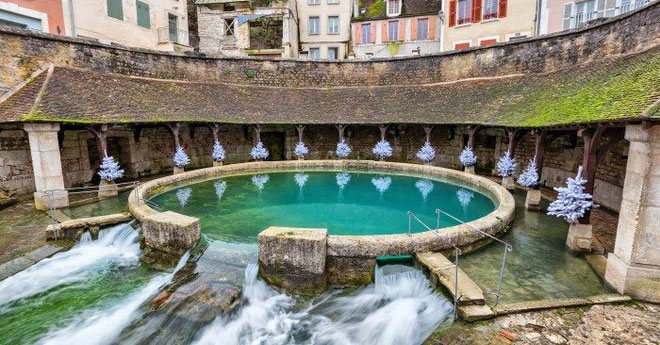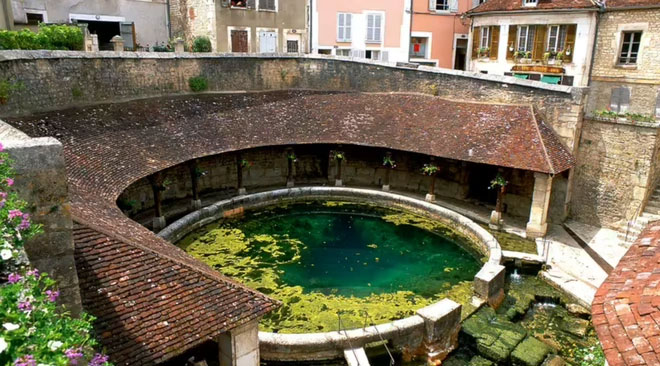In the ancient town of Tonnerre in northeastern France, there is a deep spring known as Fosse Dionne. To this day, despite numerous attempts to find answers, no one has been able to determine its origin.
There may be a giant, deadly serpent lying at the bottom of the Fosse Dionne spring in the Burgundy region of France. This is a legend created by the ancient residents of the village of Tonnerre, where the spring is located. However, in reality, no one has yet reached the depths of this mysterious spring.

Fosse Dionne is a circular stone pool built in the 18th century.
Fosse Dionne is a karst spring (karst refers to an unusual limestone region with sinkholes, underground springs, and caves), discharging an average of 311 liters of water per second. This is an unusually high discharge rate, but the velocity of the water emerging from the ground varies by season.
Fosse Dionne, meaning “sacred pit,” is a circular stone pool constructed in the 18th century, filled with water that is emerald green, amber, and sparkling, colored by minerals in the limestone caves.
The local people have used the water from Fosse Dionne for drinking, washing, cooking, and bathing. In the Middle Ages, it was believed that a serpent coiled deep within the heart of Fosse Dionne, and some even claimed it was a gateway to another world.
Today, Fosse Dionne has been landscaped with a stone basin surrounded by a reservoir, a communal washing place built in the 18th century to protect women from danger. But beneath the water, the imagery remains intact through time.

No one has yet reached the depths of this mysterious spring.
The greatest mystery of the Fosse Dionne spring is where its water actually comes from. There is certainly a lot of water flowing out, and like other limestone springs, the water emerges from a network of underground limestone caves. However, no diver has been able to discover its source, and many have lost their lives in the attempt.
No one dared to explore the depths of Fosse Dionne until 1974, when two divers attempted to map this mysterious spring. But neither of those divers returned to tell what they had seen.
In 1996, another diver attempted an exploration but also lost his life. For many years afterward, divers were banned from diving in the spring, until 2019, when diver Pierre-Éric Deseigne explored the 370-meter-long passages.
It is believed that Fosse Dionne is fed by both rainwater from the hills surrounding Tonnerre and at least one underground river.
Like other limestone springs, the water emerges from a network of underground limestone caves, but no one has yet been able to pinpoint its exact source. The divers who lost their lives in search of answers have added to the mystery surrounding the spring. Thus, the secret of Fosse Dionne remains unsolved to this day.


















































